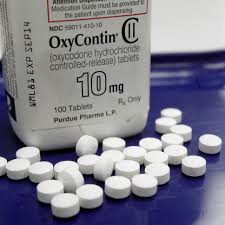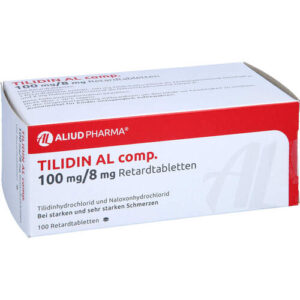Buy Tramadol 100 mg Online
Tramadol is a synthetic opioid analgesic commonly prescribed for the treatment of moderate to moderately severe pain. It works by altering how the brain and nervous system respond to pain. Since its introduction in the market, Tramadol has become a widely used pain reliever due to its efficacy and relatively favorable side effect profile compared to other opioids. This guide explores the various names Tramadol is known by, its recommended dosages, common side effects, and its overall benefits.
Tramadol ist ein synthetisches Opioid-Analgetikum, das üblicherweise zur Behandlung mittelschwerer bis mittelstarker Schmerzen verschrieben wird. Es wirkt, indem es die Reaktion des Gehirns und des Nervensystems auf Schmerzen verändert. Seit seiner Markteinführung hat sich Tramadol aufgrund seiner Wirksamkeit und seines im Vergleich zu anderen Opioiden relativ günstigen Nebenwirkungsprofils zu einem weit verbreiteten Schmerzmittel entwickelt. In diesem Leitfaden werden die verschiedenen Namen, unter denen Tramadol bekannt ist, die empfohlenen Dosierungen, häufige Nebenwirkungen und seine allgemeinen Vorteile untersucht.
Other Names and Forms
Tramadol is available under various brand names and formulations:
- Ultram: One of the most common brand names for Tramadol.
- ConZip: A brand name for an extended-release formulation of Tramadol.
- Ryzolt: Another extended-release formulation of Tramadol.
- Rybix ODT: An orally disintegrating tablet form of Tramadol.
Tramadol is available in several forms, including immediate-release tablets, extended-release tablets, and oral suspension, providing flexibility in administration based on patient needs.
Dosage Guidelines
The dosage of Tramadol varies depending on the condition being treated, the patient’s age, and their response to the medication. It is essential to follow a healthcare provider’s instructions to ensure safe and effective use.
General Dosage Recommendations
- Acute Pain:
- Adults: The usual starting dose is 50 to 100 mg every 4 to 6 hours as needed for pain. The maximum dose should not exceed 400 mg per day.
- Chronic Pain:
- Adults: For chronic pain management, extended-release formulations are typically used. The initial dose is usually 100 mg once daily, which can be increased by 100 mg increments every 5 days as needed and tolerated, up to a maximum of 300 mg per day.
- Administration:
- Tramadol should be taken exactly as prescribed by a healthcare provider. It can be taken with or without food. Consistent daily administration is crucial for managing chronic pain effectively.
Common Side Effects
Like all medications, Tramadol can cause side effects. Awareness of these effects can help patients manage them and seek medical attention if necessary.
Mild to Moderate Side Effects
- Nausea: One of the most common side effects, which typically subsides after a few weeks of treatment.
- Dizziness: Patients may feel lightheaded or dizzy, especially when standing up quickly.
- Constipation: A frequent side effect that can be managed with dietary changes or laxatives.
- Headache: Some patients may experience headaches.
- Drowsiness or Fatigue: Patients may feel more tired than usual, particularly when starting the medication.
- Sweating: Increased sweating is common.
- Dry Mouth: A frequent but manageable side effect.
Severe Side Effects
- Serotonin Syndrome: A rare but serious condition caused by excessive serotonin levels, symptoms include agitation, hallucinations, rapid heart rate, and increased body temperature. Immediate medical attention is required.
- Severe Allergic Reactions: Symptoms such as rash, itching, swelling, severe dizziness, and trouble breathing necessitate urgent medical care.
- Seizures: Tramadol can increase the risk of seizures, particularly at higher doses or in patients with a history of seizures.
- Respiratory Depression: High doses of Tramadol 100 mg can cause significant respiratory depression, leading to breathing difficulties.
- Dependence and Withdrawal: Long-term use of Tramadol 100 mg can lead to physical dependence and withdrawal symptoms if the medication is abruptly discontinued. Gradual tapering under medical supervision is advised.
Overall Benefits
Tramadol offers several benefits in pain management, making it a valuable medication for both acute and chronic pain conditions.
Benefits in Acute Pain
- Efficacy: Tramadol is effective in alleviating moderate to moderately severe acute pain, such as pain following surgery or injury.
- Rapid Onset: The immediate-release formulations of Tramadol provide rapid pain relief, making it suitable for managing acute pain episodes.
- Non-NSAID Alternative: Tramadol can be used as an alternative to non-steroidal anti-inflammatory drugs (NSAIDs), which can be beneficial for patients who cannot tolerate NSAIDs due to gastrointestinal or cardiovascular concerns.
Benefits in Chronic Pain
- Sustained Pain Relief: Extended-release formulations of Tramadol provide sustained pain relief, making it effective for managing chronic pain conditions such as osteoarthritis or chronic back pain.
- Improved Quality of Life: Effective pain management with Tramadol can lead to significant improvements in a patient’s quality of life, allowing for better mobility and daily functioning.
- Tolerability: Compared to other opioids, Tramadol has a relatively favorable side effect profile, which can make it a more tolerable option for long-term use.
Mechanism of Action
Tramadol works through a dual mechanism of action. Firstly, it binds to opioid receptors in the brain, altering the perception of pain. Secondly, it inhibits the reuptake of serotonin and norepinephrine, neurotransmitters involved in pain modulation. This dual action not only provides effective pain relief but also contributes to its efficacy in managing chronic pain conditions.
Comparisons with Other Pain Medications
Tramadol vs. Other Opioids
- Safety Profile: Tramadol is generally considered to have a lower risk of respiratory depression compared to stronger opioids like morphine or oxycodone, especially at lower doses.
- Abuse Potential: While Tramadol does have the potential for abuse and dependence, it is considered to be lower compared to other opioids. However, it should still be used with caution, particularly in patients with a history of substance abuse.
Tramadol vs. NSAIDs
- Gastrointestinal Safety: Tramadol does not carry the same risk of gastrointestinal bleeding associated with long-term NSAID use, making it a safer option for patients with gastrointestinal issues.
- Cardiovascular Safety: Unlike some NSAIDs, Tramadol does not increase the risk of cardiovascular events, which is an important consideration for patients with cardiovascular disease.
Where to buy Tramadol
Tramadol 100 mg can be found in many physical locations and sold under prescription, but the best place to buy Tramadol 100 mg is online. Confidence Pharmacy is one of the best and most trusted online pharmacies in Europe if you’re looking to buy Tramadol 100 mg without a prescription. We have the best quality products from the most trusted pharmaceutical companies in the world.
Conclusion
Tramadol is a versatile and effective medication with a broad range of applications in pain management. It offers significant benefits in both acute and chronic pain conditions, with a relatively favorable side effect profile compared to other opioids. While it does carry the risk of side effects and potential for dependence, careful dosage management and close monitoring by a healthcare provider can help mitigate these risks. Patients should work closely with their healthcare provider to determine the appropriate dosage and monitor their response to the medication. With responsible use and proper medical supervision, Tramadol can be a highly effective tool in managing pain, leading to improved quality of life and well-being.





Reviews
There are no reviews yet.